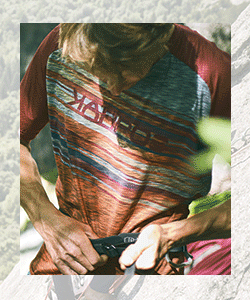Kinesiotape vs Climbers : Are you using it Correctly ? Part 1

Learning what should (and should NOT) be Kinesiotaped. Injured and wondering if applying kinesiotape is right for you? This post is the first in a series of How-To articles about Kinesiotape and its application vs. Climbers tape. The article is written by Dr Lisa Erikson-Brin, author of the book Climbing injuries solved.
Kinesiotape can be difficult to apply (and to keep on!!). How-To apply Kinesiotape will be our second posting. Check back in next week to learn more about this body-training, useful product that acts like a physiotherapist while you train for climbing.
Mistake #1: Expecting Stability Control
Kinesiotape is for brain training and swelling control. It is not to be used instead of climbers tape in those who want ligament support or joint stability. Say you damage your ankle or are waiting for that fracture to heal, this is NOT the tape for you.
Here is an image of kinesiotape (to help with swelling and joint compression) underneath the beginnings of a stability tape job for a ligament injury on the side of the PIP joint. If we were to use the blue kinesiotape alone, this joint could still shift and twist under the loads of training for climbing.

Injuries that should not be Kinesiotaped
Fractures. These usually need real stability. Think a boot, a splint, or a rigid support. If you have a fracture, you might use kinesiotape under your splint for swelling control. Or along the forearm to teach the muscle loading the fracture to relax and not spasm. These would be great practical applications for your fracture besides using it for a stability.
Fractures do best with lack of motion and as much stability control as possible. For fingers, we use a finger splint, in the hand. We also usually use a splint (cock up or cock down splint depending on the injury, etc). The WORST thing we can do for a fracture is to keep moving it, which continuously breaks the delicate tissues created by osteoblasts int eh healing region.











No Responses
[…] back to Part 2 of our Kinesiotaping Application Series. In Part 1 we learned what should and should not be taped. We also learned a few application No-Nos. Now on […]